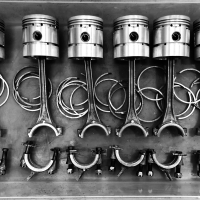262ci Oil Pan ---Using Permatex Ultra Black Sealant vs. Regular Gasket
StepUp
Member
I dropped the oil pan on a donated 262ci engine to inspect the bottom end and clean the interior of the pan. I'm really glad I did! There was a massive glob of sludge around the oil pickup screen that undoubtedly would have blinded out and killed the oil pressure.
After cleaning the oil pick up screen, the sludge, and painting the pan, it's now time to reassemble. Since the original oil pan gasket did not survive, and I don't have a new one readily available, I'm considering using Permatex Ultra Black sealant instead. Has anyone tried using this sealant on the oil pan? If so how did you seal the circular hole on the block's lower skirt where the oil pickup tube penetrates to feed the oil pump? Did you use an o-ring or only the sealant?
Appreciate any feedback.
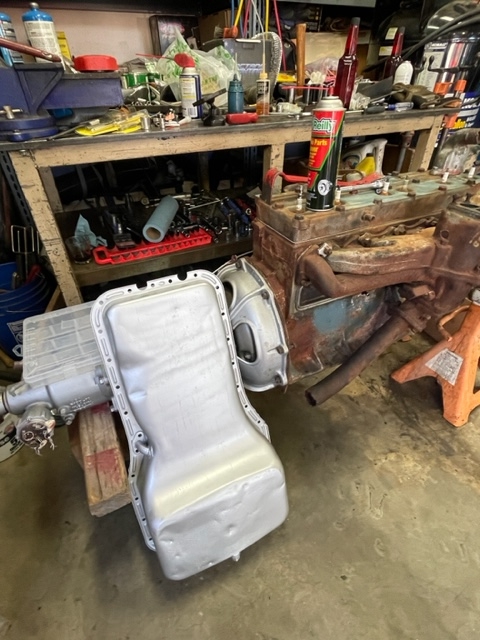
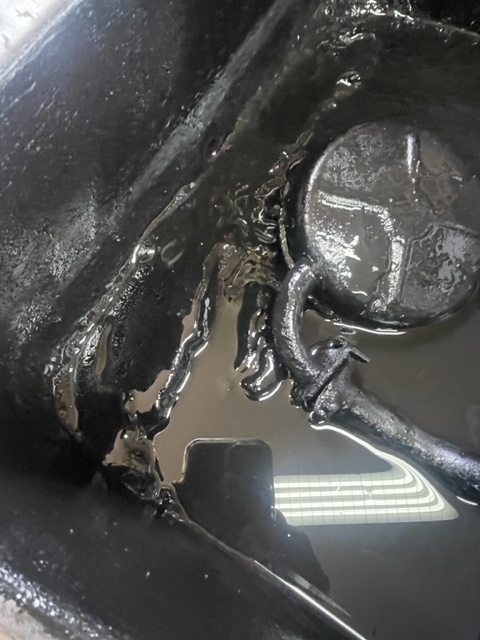
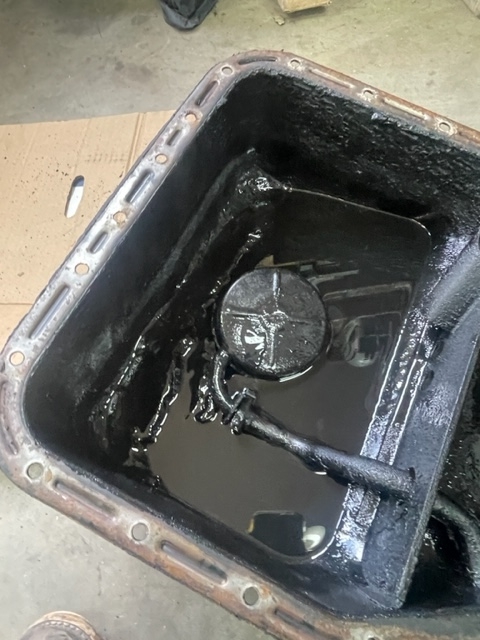
0
Comments
-
Your engine...
No experience with using just Permatex Ultra Black sealant.
The pickup through the pan uses an o-ring seal. Using a gasket with a sealant will provide the best sealing. You can purchase gasket material from places like Auto Zone, NAPA, and O'Rielis. Make your own gasket and seal the edges with the Permatex. Good Luck.0 -
Thanks Glowplug! Any idea what size o-ring? I notice the hole in the block is "cone" shaped. Here are pics of the + 25 year old o-ring:
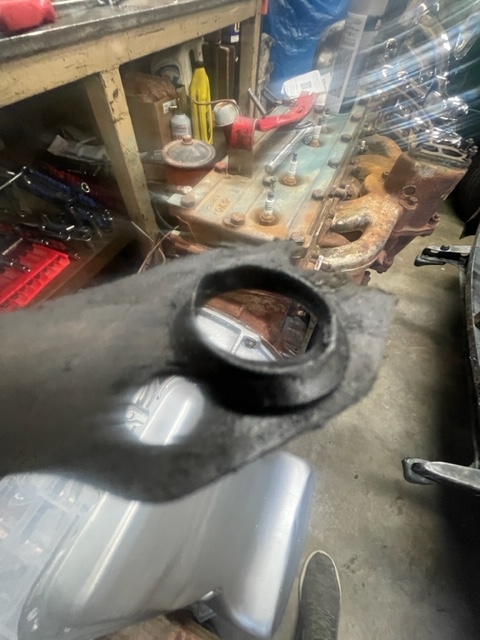
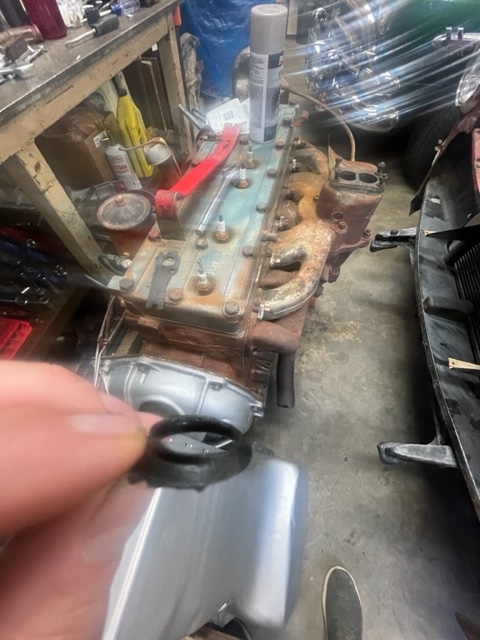 (BTW, don't mind my father's ghost flying past his Hudson again. He sure loves hanging out in my garage!)0
(BTW, don't mind my father's ghost flying past his Hudson again. He sure loves hanging out in my garage!)0 -
Olson Gasket would have what you need for gasket(s) & o-ring.0
-
I watch a number of will it run videos and am amazed at the comments about how clean oil is in a vintage engine. Your oil pan is proof and confirmation of what I try to tell folk about oil that has set for many many moons. Additive package and contaminants over time will drop out of the oil and accumulate on the bottom of the pan. Like yours, can choke off pick up screen and starve engine of adequate lubrication. Thank you for reminding us.0
-
I once removed the oil pan from a step-down that had sat for 20 odd years and the oil had turned to a thin jelly. Looking at the dipstick you would think the oil pan contained clean oil.
Re the O ring, you need one with a 1/16" section and an ID the same size as the oil hole.
For the gasket use 1/32" or 0.8mm thick gasket paper, buy a set of cheap hole punches to put the holes in the gasket.
Earlier Hudson engines didn't get an O ring you had to make sure the pan(s) were well sealed to the block.0 -
Thanks mate! I bought the gasket paper and was hole-punching this morning when I read your note (2nd round of coffee). I found an o-ring that snugs around the tube but is a tad larger than 1/16". I'm proceeding with it. A thin layer of Ultra Black will adorn the faces of this homemade gasket.BTW, note in the pictures a groove in the sludge from my index finger ---that groove maintained perfect posture and composure over night before the following morning's clean-out. In this case a dark jelly gunk from an engine sitting 25 years after low mileage usage.I also removed two main bearing and two rod caps to inspect the babbits ---incredibly, all four looked great. Adjusted the valves to 0.014 I / 0.017 E. Next is firing-up the beast in the garage, ensuring +- 30 psi oil pressure, listening for odd knocks, performing pre & post compression tests, etc., and assuming everything passes muster, stab it back into the belly with the rebuilt 3sp/OD.0
-
What I’ve experienced is that even in a sbc engine there can be sledge that develops at the bottom the pan & ultimately doesn’t fully mix with the new oil but can just sit there. Doesn’t matter how many oil changes occur & it doesn’t mix but must have the pan removed & cleaned out.I wouldn’t be afraid of using some sealant on the new gaskets, just DON’T go crazy with the amount used & follow the directions. I’ll be pulling & cleaning my 212’s pan over winter. I spent a couple days working the pan & splash tray edges perfectly flat but oil still leaked so I’ll be sealing mine up.0
-
Thanks BigSky --I've successfully used Ultra Black and it's faster cure time cousin, "Right Stuff," on smaller gasket surfaces but never as a 100% substitute for a large oil pan gasket. This time I'm going the hybrid route of making a 4 piece cork gasket (2 long side rails, 2 shorter laterals) with thin application of Ultra Black on both sides of the pieces. I'll post some pics here soon (and in a couple of months report back whether it held).
0
Categories
- 36.9K All Categories
- 113 Hudson 1916 - 1929
- 20 Upcoming Events
- 93 Essex Super 6
- 28.6K HUDSON
- 574 "How To" - Skills, mechanical and other wise
- 995 Street Rods
- 151 American Motors
- 180 The Flathead Forum
- 49 Manuals, etc,.
- 78 Hudson 8
- 44 FORUM - Instructions and Tips on using the forum
- 2.8K CLASSIFIEDS
- 608 Vehicles
- 2.2K Parts & Pieces
- 77 Literature & Memorabilia
- Hudson 1916 - 1929 Yahoo Groups Archived Photos


